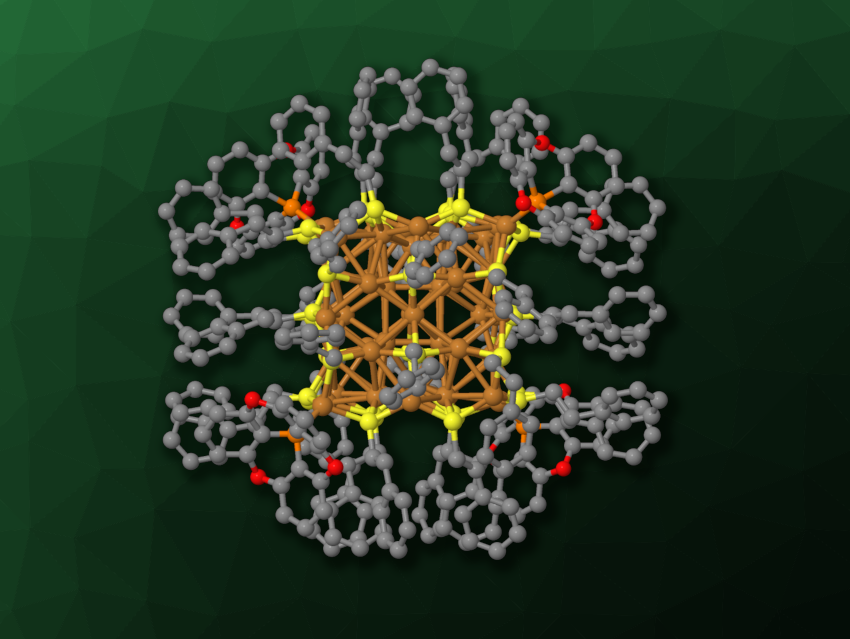Metal nanoclusters can have useful properties that are distinct from both those of single atoms and those of the corresponding bulk material. They can be used, e.g., in catalysis or sensing. The nanoclusters are usually protected by ligands, which can influence the clusters’ size and shape, as well as their interactions with their surroundings. Phosphangulene is a bowl-shaped phosphine ligand, which can allow for interactions with other molecules with curved surfaces. However, large metal clusters with many atoms that are stabilized by phosphangulene ligands had not been explored so far.
Yang Yang, Jiangsu Normal University, Xuzhou, China, and colleagues have synthesized a cubic Cu58 nanocluster with bowl-shaped phosphangulene ligands and 2-phenyl-1-ethanethiolate ligands (pictured). The clusters were obtained from [Cu(CH3CN)4]BF4, 2-phenyl-1-ethanethiol (PETH), and phosphangulene (phang) via a reduction using NaBH4. They form dark red crystals, which the team characterized using single-crystal X-ray diffraction.
The researchers found that the Cu58 cluster has a van der Waals diameter of about 2.4 nm. The Cu58 unit forms a slightly distorted cube shape, with a Cu8 center and three shells containing 6, 24, and 20 copper atoms, respectively, from the inside to the outside. The cluster has four phosphangulene ligands, which are arranged at the corners in a tetrahedral manner, and 36 PET– ligands. It has an overall formula of [Cu58(phang)4(PET)36(H)20](BF4)2.
The bowl-shaped ligands can interact with species with curved surfaces, such as fullerenes. For example, the team studied a mixture of the synthesized cluster and C60 and found that the photocurrent response of the mixture showed a significant increase compared with that of the cluster and the fullerene separately. The researchers speculate that other phosphangulene-protected metal clusters could also be explored in further research.
- A Bowl-Shaped Phosphangulenes Protected Cubic Cu58 Nanocluster,
Qian Zhang, Hao Zheng, Jie Zhou, Jia-Ji Yang, Kai-yue Xu, Lian-Yun Shen, Zongjie Guan, Yang Yang,
Chem. Commun. 2024.
https://doi.org/10.1039/D3CC05791G




